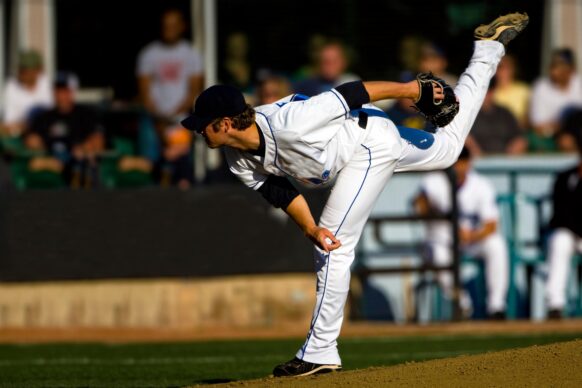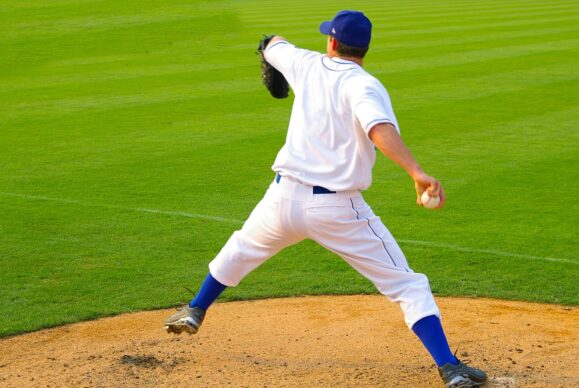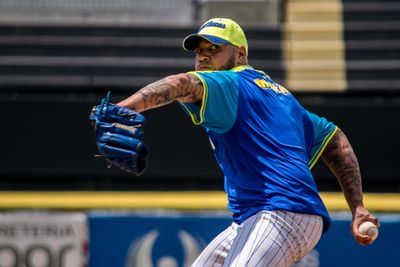by Cary Mendes, DPT, OCS
Arm conditioning is an important part of maintaining arm strength and fatigue through a long season – or a pandemic. It’s important to gradually build a throwing program from the ground up and not just jump right into it. We want to make sure that we’re incorporating a solid, graded return-to-throwing program when returning from any layoff. This includes after recovery from an injury, leading into a new season or, in the case of 2020, ramping back up after a pandemic.
A good program slowly increases distance and number of throws on flat ground. The next step is progressing to throwing off of the mound with fastballs only, then adding breaking balls into the mix. The final progression is to throw a simulated game. These progressions usually start around 45 feet and progress to 120 feet (some programs will go to 180) for adolescents and adults while younger kids may want to start at shorter distances like 20 feet.
There are some key points to address within the interval throwing program:
- Be sure to warm up, stretch and perform the light strengthening exercises that we discussed for shoulder mobility, hip mobility and separation.
- Perform 10-20 warm-up throws at 30 feet.
- All throws on flat ground should be on an arc with a crow-hop.
- Throws should be 50-75% of max effort.
- Perform core, hip, scapular and rotator cuff exercises on rest days.
Soreness rules are also important to follow in order to avoid progressing too fast and overstressing the tissues:
- You should experience no pain or soreness during throwing.
- If pain is felt during throwing, take the day off and resume throwing the following day while dropping back 1 phase.
- If you feel sore more than 1 hour after throwing or the next day, take 1 day off and repeat the most recent throwing program workout.
- If you feel sore during warm-up but soreness is gone within the first 15 throws, repeat the previous workout.
- If the shoulder/elbow becomes sore during the workout, stop and take 2 days off. Upon return to throwing, drop back 1 phase.
- If you feel sore during warm-up and soreness continues through the first 15 throws, stop throwing and take 2 days off. Upon return to throwing, drop down 1 phase.
If you’d like to customize or address your return-to-throwing program, contact us for an appointment with a physical therapist!
References and links to throwing programs:
Reinold MM, Wilk KE, Reed J, Crenshaw K, Andrews JR. Interval sport programs: guidelines for baseball, tennis, and golf. J Orthop Sports Phys Ther. 2002;32(6):293-298
https://www.jospt.org/doi/pdf/10.2519/jospt.2002.32.6.293
Axe M, Hurd W, Snyder-Mackler L. Data-based interval throwing programs for baseball players. Sports Health. 2009;1(2):145-153.
https://www.ncbi.nlm.nih.gov/pmc/articles/PMC3445073/




